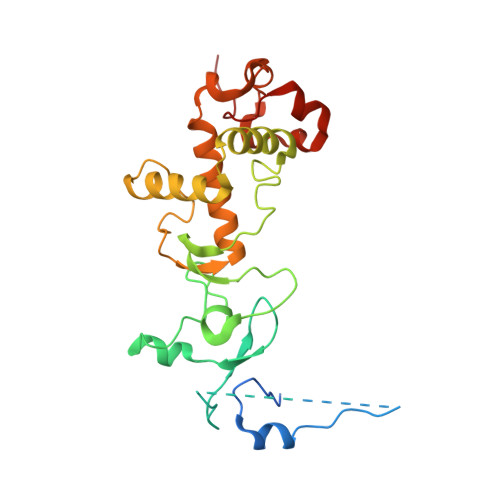Structural Basis of Poly(Adp-Ribose) Recognition by the Multizinc Binding Domain of Checkpoint with Forkhead-Associated and Ring Domains (Chfr).
Oberoi, J., Richards, M.W., Crumpler, S., Brown, N., Blagg, J., Bayliss, R.(2010) J Biol Chem 285: 39348
- PubMed: 20880844
- DOI: https://doi.org/10.1074/jbc.M110.159855
- Primary Citation of Related Structures:
2XOC, 2XOY, 2XOZ, 2XP0 - PubMed Abstract:
Cellular stress in early mitosis activates the antephase checkpoint, resulting in the decondensation of chromosomes and delayed mitotic progression. Checkpoint with forkhead-associated and RING domains (CHFR) is central to this checkpoint, and its activity is ablated in many tumors and cancer cell lines through promoter hypermethylation or mutation. The interaction between the PAR-binding zinc finger (PBZ) of CHFR and poly(ADP-ribose) (PAR) is crucial for a functional antephase checkpoint. We determined the crystal structure of the cysteine-rich region of human CHFR (amino acids 425-664) to 1.9 Å resolution, which revealed a multizinc binding domain of elaborate topology within which the PBZ is embedded. The PBZ of CHFR closely resembles the analogous motifs from aprataxin-like factor and CG1218-PA, which lie within unstructured regions of their respective proteins. Based on co-crystal structures of CHFR bound to several different PAR-like ligands (adenosine 5'-diphosphoribose, adenosine monophosphate, and P(1)P(2)-diadenosine 5'-pyrophosphate), we made a model of the CHFR-PAR interaction, which we validated using site-specific mutagenesis and surface plasmon resonance. The PBZ motif of CHFR recognizes two adenine-containing subunits of PAR and the phosphate backbone that connects them. More generally, PBZ motifs may recognize different numbers of PAR subunits as required to carry out their functions.
Organizational Affiliation:
Section of Structural Biology, Institute of Cancer Research, Chester Beatty Laboratories, 237 Fulham Road, London SW3 6JB, United Kingdom.
















